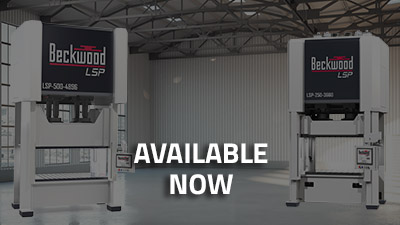Why Go Servo-Electric?
Servo-electric actuation has allowed the Beckwood engineering team to design and craft the most precise, energy-efficient, and contaminant-free presses that we’ve made to date. Beckwood LSP™ is a new era of servo-electric press technology that combines the flexibility of hydraulic presses with the performance of servo-mechanical presses. Maintenance-free for millions of cycles, LSP™ offers precision, reliability, and efficiency to maximize your production.
We’ve delivered LSP™ presses to satisfied customers in:
- Appliance
- Aerospace
- Automotive
- Electrical
- Medical
- And many other industries
Whatever it is that you make, there’s an LSP™ model that can find a home in your plant.
Reduce Scheduled Maintenance to Near None
Our LSP™ servo-electric presses require hardly any maintenance throughout their entire life cycle, with a BOM that has 70% less components than your average hydraulic press. By eliminating the need for hydraulic pumps, valves, hoses, & filtration systems, businesses like yours can do more of what you do best by keeping maintenance-related downtime to a minimum.
Scale Tonnage Capabilities on Your Terms
In just the past 5 years we’ve increased the tonnage capacity of our servo-electric presses from an initial 50 tons to now up to 500 tons. As linear servo-electric actuation technology continues to advance at breakneck speed, we’re leading the innovation to help customers like you scale up your press’ tonnage capability on your own terms.
New Technology – Familiar Support
Feeling skeptic about making the switch? Our servo-electric presses are designed by the same experts behind the Beckwood hydraulic presses that you know and love. Even with a different actuation mechanism, these presses are still from Beckwood, meaning that you’ll get the same dedication to creative engineering, quality, and unwavering support that you would get with any of our other press models.
LSP™ Machine Specifications
Unparalleled Forming Precision
The Beckwood LSP™ product line features 8 standard models in an array of sizes, speeds, and tonnages. With presses ranging from 125 to 500 tons, Beckwood LSP™ offers the highest tonnage capacity of any linear servo press available.
Our Most Advanced HMI Software Yet
Our servo-electric models (both EVOx™ and LSP) are equipped with our most advanced HMI software to make using your new press both easy and exciting. Enjoy features like:
- Built-in “Go / No Go” Monitoring capability
- High-speed data capture and real-time display
- Performance analysis tools to review current & previous cycles
- Step by Step Recipe Creation & Seamless Recipe Storage Capabilities




